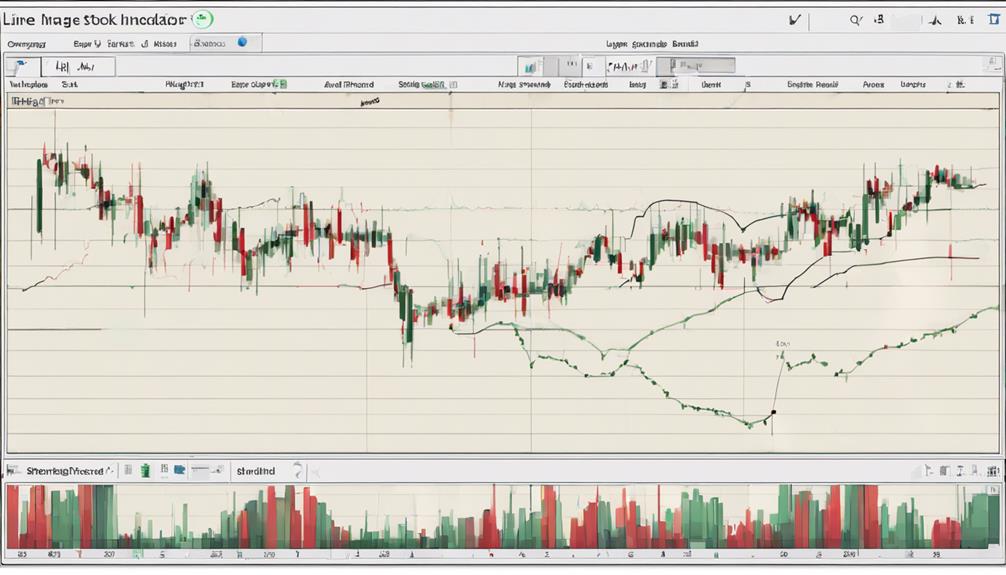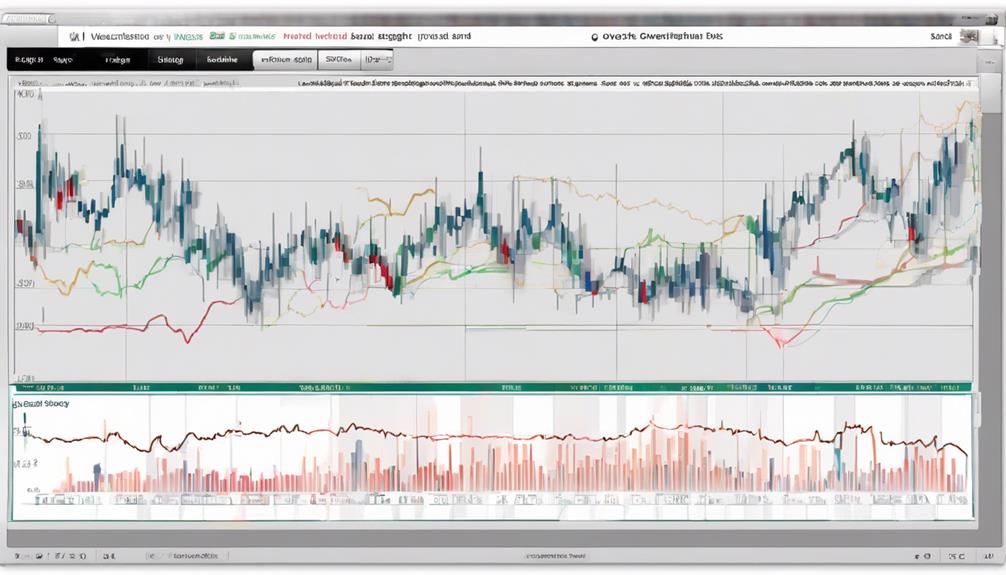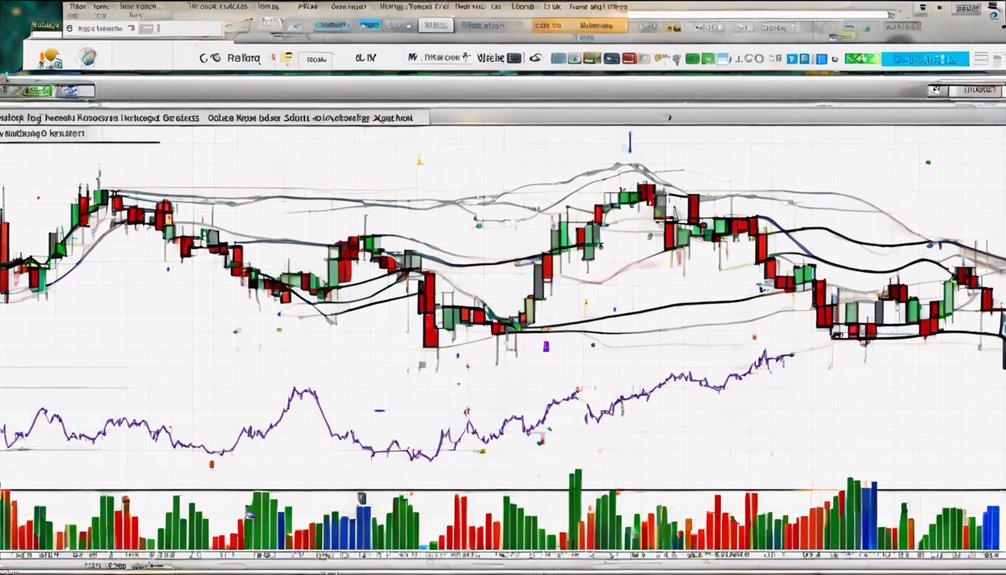Do you find yourself lost in the maze of Bollinger Bands and Relative Strength Index (RSI)? Understanding these tools might just be the key to unlocking profitable trading opportunities in the financial markets.
By grasping the intricacies of how these indicators work together, you can gain valuable insights into market trends and make informed decisions.
So, are you ready to unravel the mystery behind these powerful tools and take your trading game to the next level?
RSI Calculation and Trading Strategies
When calculating the Relative Strength Index (RSI) for trading strategies, you can use the formula RSI = 100 – (100 / (1 + RS)), where RS is the ratio of up closes to down closes over a specific period.
RSI values above 70 signal overbought conditions, while readings below 30 indicate oversold territory, aiding traders in identifying potential reversals. As a leading indicator, RSI swiftly reacts to price changes, assisting in pinpointing market extremes and potential trading opportunities.
Understanding Bollinger Bands Calculation

Understanding the calculation of Bollinger Bands involves utilizing a 20-day Simple Moving Average (SMA) and incorporating two standard deviations above and below the SMA. The upper band is determined by adding two standard deviations to the SMA, while the lower band is calculated by subtracting two standard deviations from the SMA.
This calculation is essential in technical analysis for traders to gauge market volatility. Bollinger Bands adapt to market fluctuations, expanding in times of high volatility and contracting during calmer periods.
Utilizing RSI With Bollinger Bands

To effectively utilize RSI with Bollinger Bands in market analysis, traders combine momentum and volatility indicators to enhance signal accuracy and make informed trading decisions. RSI values above 70 indicate overbought conditions, while Bollinger Bands help identify potential price reversals.
Traders use RSI to confirm Bollinger Bands signals, supporting versatile trading strategies. The combination of RSI with Bollinger Bands enhances market insight, improving signal accuracy.
Benefits of Combining Bollinger Bands and RSI

Combining Bollinger Bands with RSI enhances market analysis by providing more accurate signals for identifying overbought and oversold conditions. This combination offers various benefits:
- Improved Trading Signals: Bollinger Bands and RSI working together offer more reliable signals for traders.
- Enhanced Decision-Making: The amalgamation of Bollinger Bands and RSI assists in making better-informed decisions in the market.
- Comprehensive Analysis: Together, these indicators provide a comprehensive analysis of market conditions, aiding in understanding potential price trends and reversals.
- Strengthened Entry/Exit Points: Aligning RSI with Bollinger Bands strengthens the validity of entry and exit points, contributing to more effective trading strategies.
How Do Bollinger Bands and Relative Strength Index (RSI) Work Together in Technical Analysis?
When using Bollinger Bands and Relative Strength Index (RSI) together in technical analysis, investors can better understand relative strength index to identify potential buy or sell signals. Bollinger Bands can show overbought or oversold conditions while RSI can confirm these signals, providing a more comprehensive view of market trends.
Can the Relative Strength Index be Used in Conjunction with Bollinger Bands?
Yes, the Relative Strength Index can be used in conjunction with Bollinger Bands. By using these two indicators together, traders can gain a more comprehensive understanding of market trends and potential entry or exit points. Here are some bollinger bands trading tips to consider when using these indicators together.
Tips for Effective Bollinger Bands Use

Utilize Bollinger Bands effectively by adjusting the settings to match your trading style and timeframe, enhancing your ability to gauge market volatility and potential reversals. Traders can customize the indicator by altering the moving average length or standard deviations.
When the bands squeeze together, indicating low volatility, it may precede increased market volatility. Bollinger Bands help identify trend continuation points, breakouts, and potential reversals based on price action relative to the bands.
Frequently Asked Questions
How Do You Use RSI and Bollinger Bands?
To use RSI and Bollinger Bands effectively, sell when RSI exceeds 70 and Bollinger Bands signal overbought conditions. Conversely, buy when RSI falls below 30 and Bollinger Bands indicate oversold levels. This approach confirms market extremes for informed trading decisions.
What Do Bollinger Bands Tell You?
When trading, Bollinger Bands tell you about market volatility and potential shifts. They don't predict price movement but aid in identifying oversold conditions, setting stop-loss levels, and confirming trend reversals for more informed trading decisions.
What Is the Relative Strength Index Indicator?
The Relative Strength Index (RSI) is an oscillator measuring price momentum. RSI ranges 0-100, indicating overbought above 70 and oversold below 30. Use RSI to identify potential reversals and corrections, aiding entry and exit decisions.
What Is the Difference Between ADX and Bollinger Bands?
When comparing ADX and Bollinger Bands, note that ADX gauges trend strength on a scale of 0 to 100, while Bollinger Bands track price volatility using standard deviations. Combine ADX with other indicators for trend confirmation.
Conclusion
You've learned about Bollinger Bands and Relative Strength Index, powerful tools for analyzing market conditions and spotting trading opportunities. Remember, combining these indicators can help confirm trends and improve your trading strategy.
But hey, who needs indicators anyway? Just throw a dart at a stock chart and hope for the best! Just kidding, stick to your analysis and stay disciplined in your trading approach for better results.
Happy trading!
